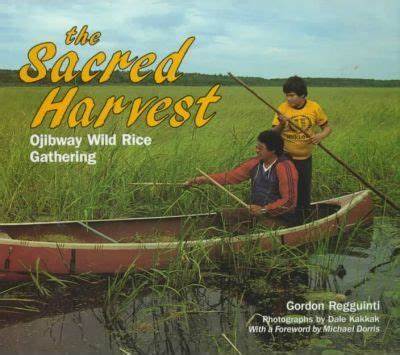Wild rice, which the Ojibway call mahnomin, has long been an important food for Native Americans in the Upper Great Lakes region. Archaeologists, people who study past cultures, say that Indians gathered wild rice as far back as 2,500 years ago.
For the Ojibway people, wild rice is not only a basic food crop, but also has spiritual meaning. Stories handed down from generation to generation tell about a time when the Ojibway lived on the East Coast of North America. Prophets spoke of a great journey the Ojibway would have to make if they were to survive. The journey would be complete, the prophets said, only when the people reached a land where food grew abundantly in the water. This place would be their home, and the food a gift of the Creator.
The Ojibway migration took many hundreds of years. Finally, in the mid-1500s, the Ojibway found their special place, in what is now northern Minnesota and Wisconsin. Wild rice became a staple of their diet, helping them to survive the cold, harsh winters.
In the more than 400 years since the Ojibway arrived in the region, they have grown to be one of the largest nations of Indian people in North America. Ojibway reservations–land that the Ojibway kept through treaties with the U.S. government–are located throughout northern Minnesota and Wisconsin and in North Dakota and Michigan. Ojibway people also live in parts of Canada.
Comprehension Questions
1. What sacred harvest is being addressed by the author?
A. The harvesting of blueberries in late summer.
B. The collection of sap from the maple trees at the end of winter and beginning of spring.
C. Wild rice in the lakes.
A. Because their spiritual leaders bless it.
B. Because it provides all the nutrients needed to survive.
C. Because they had to migrate from the East Coast and it was prophesized that they would find found food that grew abundantly in water.
Your Thoughts
Vocabulary
4. List any vocabulary words below.

